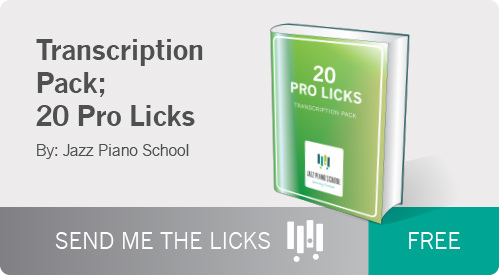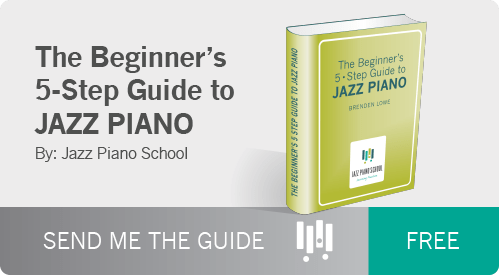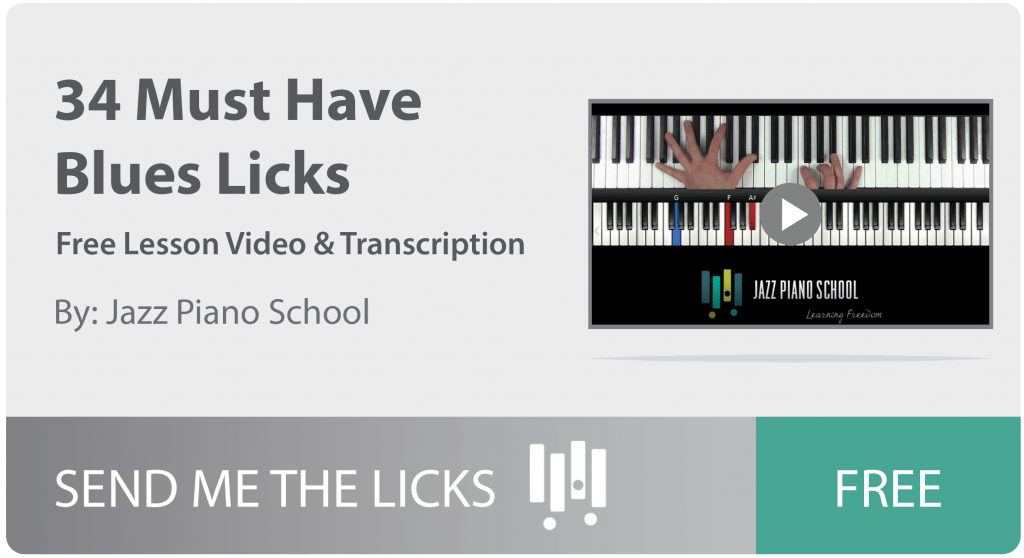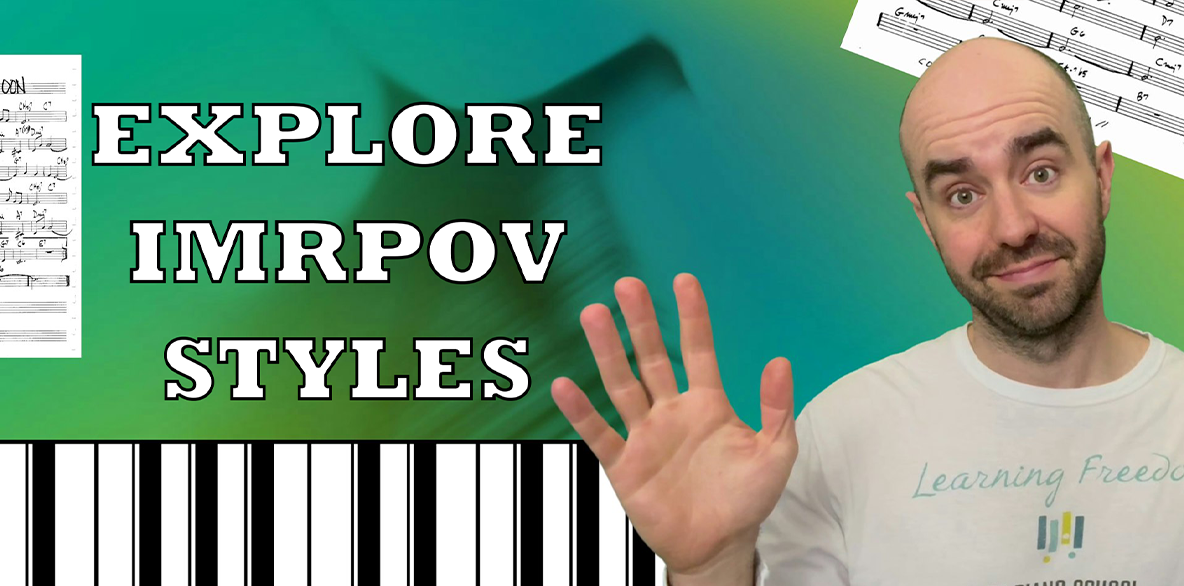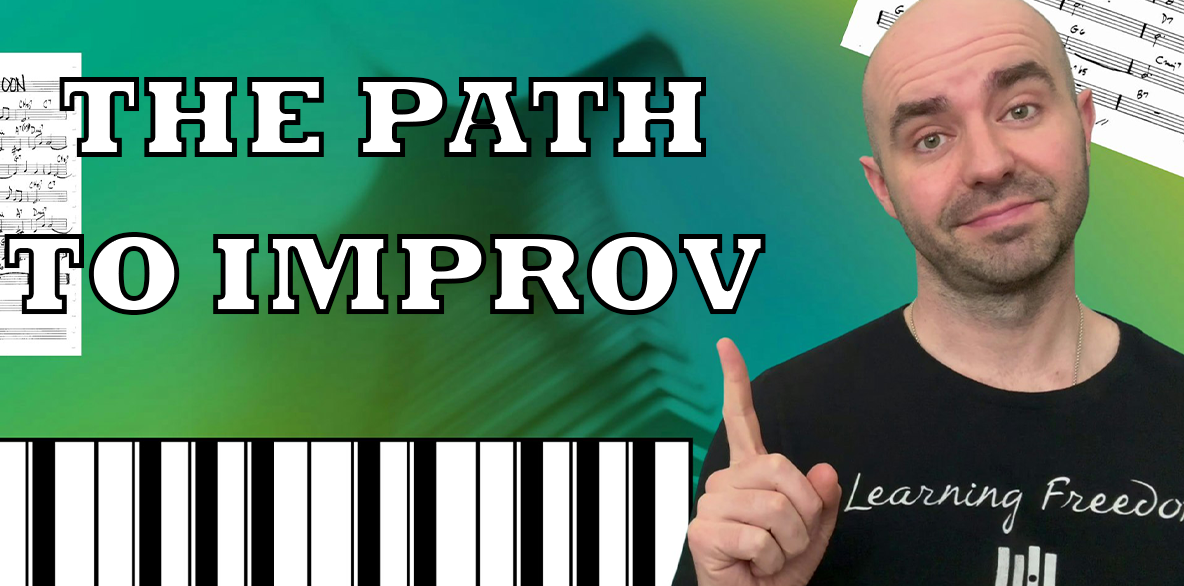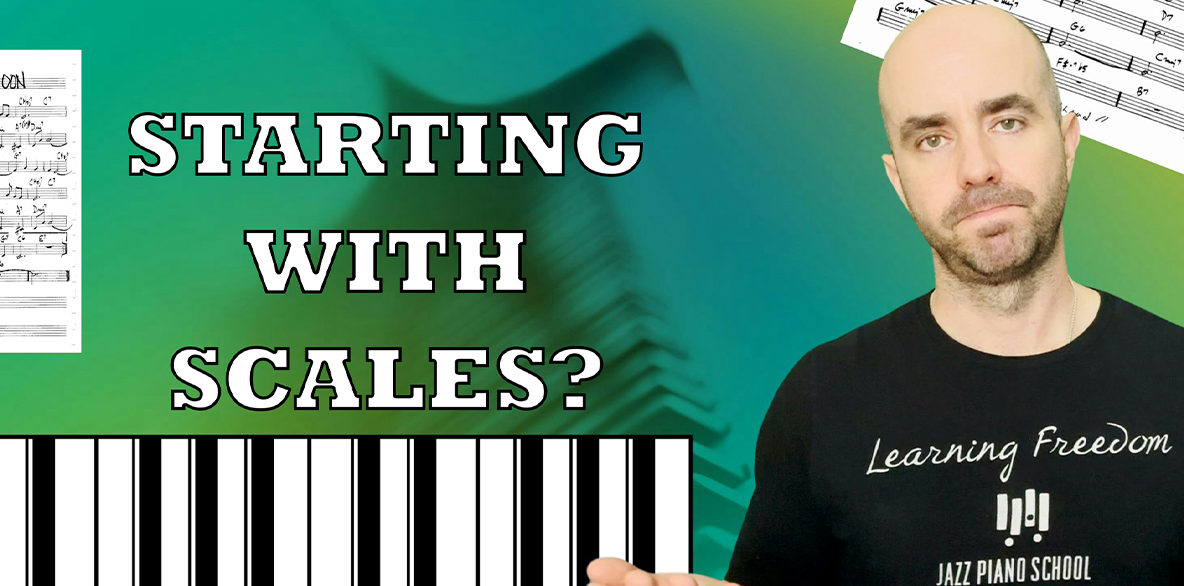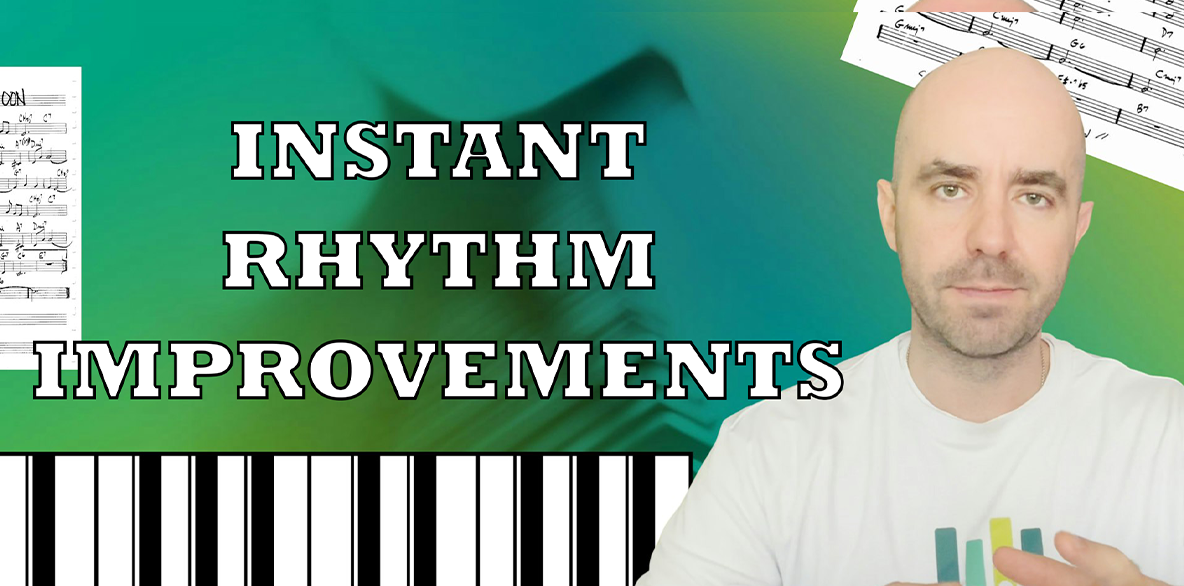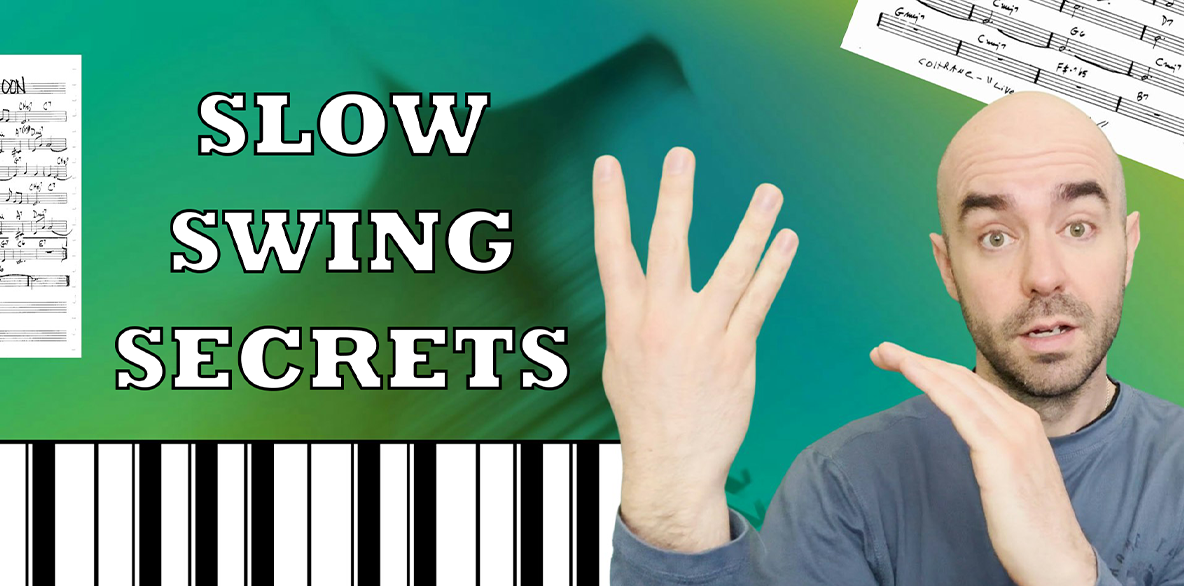Getting Started with Playing Solo:
When you’re first starting off, playing solo piano can be a daunting task. Thankfully, it doesn’t have to be. As jazz scholars, we are often taught to play with a band before truly exploring the art of playing by ourselves. This is probably because when you get right down to it, playing with a band is a big part of what jazz is all about. All that said, I can speak from personal experience and say that once you’re comfortable playing solo piano, it can be the most liberating jazz piano experience you’ll ever have.
Here’s Brad Mehldau playing Moon River live, solo piano style for some inspiration before we get into the nitty gritty:
Reasons Why Playing Solo is a Liberating Experience:
- You’re in control of the tempo – It’s true… there’s no bass or drums to keep the time for you, but on the other hand, you can do whatever you want with it. If you feel like the A-section of a song should be faster, it’s up to you to speed it up. You can phrase the melody however you want, even bending the time. Maybe the end of the A-section melody needs a ritardando for extra emotional effect— easy, you can just do it without signaling anyone or risking someone losing the time, causing the band to “train wreck.”
- Your feel is the dominating force – There are few things that feel as good as locking in with a killer rhythm section, but have you ever played with a bassist and drummer and just felt dragged down? On the other hand, maybe you’ve experienced a situation where the rhythm section is rushing, and you simply can’t get them to slow down. Fighting each other rhythmically is one of the worst feelings that can arise when playing with a group. Thankfully, when you’re playing solo, the feel is all up to you.
- You’re in control of the bass – This can sound scary at first, but as soon as you embrace the bass, it will change the way you hear chords and structure your voicings. You might even realize that having a bass player was holding you back in many ways. For example, your G-minor voicing no longer has to be placed over a G in the bass. Maybe your voice leading will improve greatly if it’s over a Bb. This is up to you now, so experiment and have fun with trying out different notes at the bottom of your chords.
- You can switch between styles instantaneously: You can start the song off rubato, switch into stride piano, and then if you want the consistency of a bass line, you can always play left hand bass. One fun exercise is trying to emulate different pianists while you’re playing, making the A-section sound like Bud Powell, and then making the B-section sound like Bill Evans.
- You can arrange on the fly: If you want to change anything about your arrangement, you can do so instantaneously, no rehearsal or even discussion required. You can get really crazy with it. You have no limits. For example, why not take quoting a tune to a whole new level? When you’re playing with a band, quoting another tune usually just comes down to hearing a melody from another song that works over the chords of this one and squeezing it into your melodic line. When you’re playing solo, you can find incredibly creative ways to quote other songs. You might actually just quote the chords to the other song, continuing to play the melody of the song you started with but superimposing it over the chords of another song. This would obviously not be possible if there were a bass player there (at least not typically). On the other hand, you could just as easily completely switch into another tune if your heart desires. Maybe you’re feeling sad and suddenly you realize how interesting the Major tune you’re playing would sound minor. When you’re playing solo, you can just GO for it. Make the entire song minor and see where it goes from there.
- There’s no one to fall back on when you make a mistake: This might sound like a negative at first. However, the more you play solo, the better you get at covering up your mistakes. There are, of course, different types of mistakes we can make. When we’re playing with a band, we are somewhat liable in particular to making melodic or harmonic mistakes, but the cushion that the bass and drums provide make us feel safe from rhythmic mistakes. Not having this cushion is one of the fastest ways to improve our own senses of rhythm. We encourage you to play solo piano as much as possible in front of an audience. Learning to cover up your mistakes, or even utilize them as creative inspiration is one of the greatest and most important skills for any jazz pianist.
- It’s the most honest: If you so choose, you don’t have to stick to a tune at all. You can go off on any musical tangent that arises inside you. In other words, you can play with complete stream of conscious control over what happens, reacting to every little whim inside your brain and seeing where each one takes you.
5 Solo Piano Albums that You Absolutely MUST Listen to for Ideas:
Hank Jones – Handful of Keys: This record features the music of Thomas “Fats” Waller, one of the greatest stride pianists of all time. Hank Jones takes these tunes and provides the listener with a wealth of stride piano knowledge, but his own personality permeates the tunes and creates an incredibly creative blend between stride piano and Jones’ brilliant post-bebop sensibility.
Keith Jarrett – The Köln Concert: This record is completely raw, stream of conscious Keith Jarrett. It reveals to the listener what can happen when he is completely comfortable playing solo piano and is willing to follow his emotions with incredible honesty.
Bill Evans – The Solo Sessions: This is a rare glimpse into Bill Evans playing freely. Bill Evans was one of the most scrupulous pianists out there when it came to having a planned arrangement for each tune. However, this album is quite the opposite of that. Note how the strange transitions and even mistakes he makes throughout lead him into new territory, really enhancing the experience for the listener, making it surprising and enjoyable to listen to.
Brad Mehldau – Live in Tokyo: Brad Mehldau is by far the most modernistic of the pianists mentioned so far. This album is a fantastic example of harmonic freedom. Mehldau is fantastic at creating his own bass movement and reharmonization, playing with the chordal structure of a tune.
https://www.youtube.com/watch?v=Sn-PrAtGfLY
Art Tatum – The Tatum Solo Masterpieces: Many of the best jazz pianists believe Art Tatum is the greatest that ever walked the earth, so don’t let listening to him get your spirits down. Instead, listen to his brilliance, creativity, and complete mastery of the solo piano medium and draw inspiration and ideas for your own improvement.
https://www.youtube.com/watch?v=uWnr090RV54
Overall, playing solo is a personal experience that really teaches you how you think about music. It can reveal some of your worst weaknesses, but also compel you to be the best you can be, so keep practicing. When you reach that moment of feeling completely comfortable playing by yourself, you’ll know just how worth it it really is.




